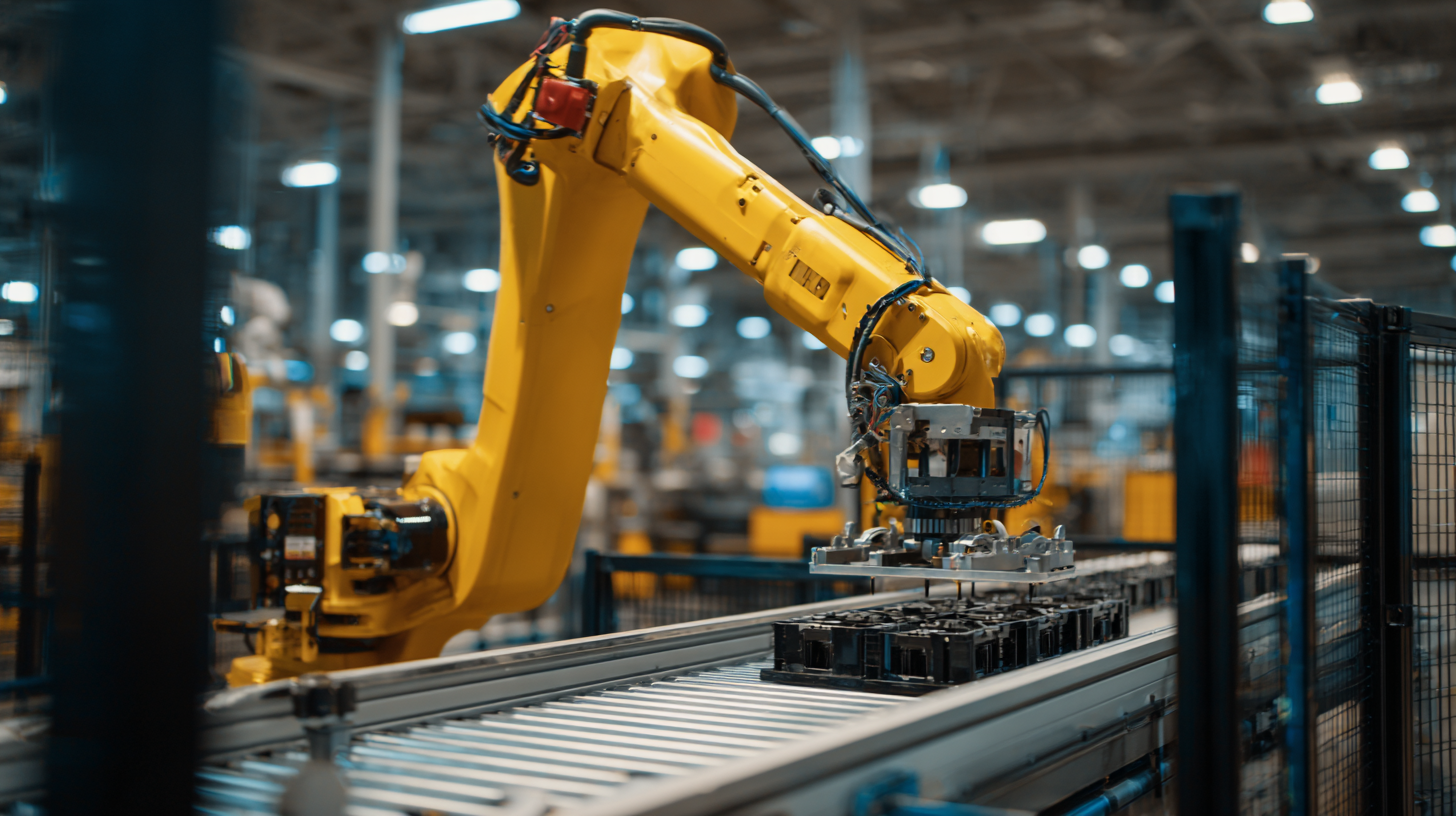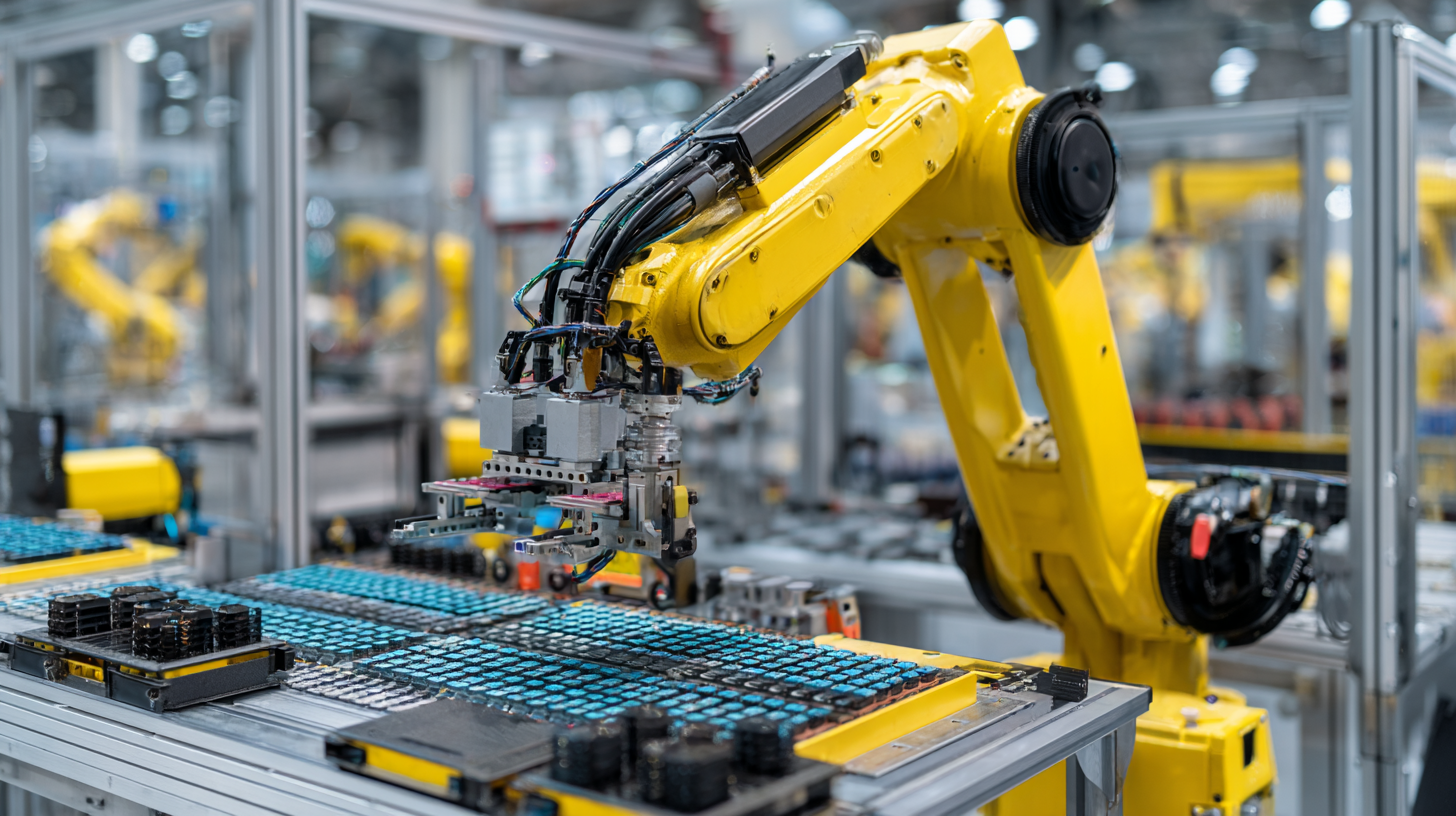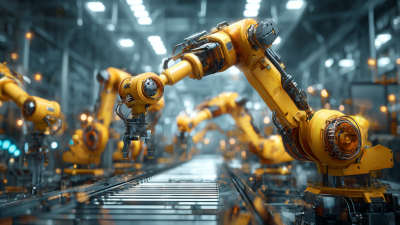Revolutionizing Manufacturing: How Pick and Place Robots Optimize Efficiency by 30% in Production Lines
In today's fast-paced manufacturing landscape, the integration of technology is paramount to achieve operational excellence. One of the most impactful advancements has been the adoption of pick and place robots, which have been shown to optimize production efficiency by as much as 30%. According to a report by the International Federation of Robotics, automation in manufacturing can lead to significant reductions in labor costs and improvements in productivity, with pick and place robots playing a crucial role in this transformation. These robots are designed to swiftly and accurately handle components, thereby minimizing cycle times and enhancing throughput. As manufacturing sectors increasingly embrace Industry 4.0 strategies, the implementation of pick and place robots not only streamlines processes but also supports the need for flexibility and scalability in response to demand fluctuations. Thus, the evolution of these robotic systems is revolutionizing the way products are assembled, signaling a new era of efficiency in manufacturing operations.

Understanding Pick and Place Robots: Key Technologies Driving Efficiency in Manufacturing
 Pick and place robots have emerged as a transformative technology in manufacturing, significantly enhancing production line efficiency. Central to their effectiveness are several key technologies, including advanced machine vision systems, precision motion control, and artificial intelligence. Machine vision enables these robots to accurately identify and locate items on the production line, allowing for quick and precise handling. This capability not only minimizes the time spent on locating objects but also reduces errors associated with manual handling, ensuring a smooth production flow.
Pick and place robots have emerged as a transformative technology in manufacturing, significantly enhancing production line efficiency. Central to their effectiveness are several key technologies, including advanced machine vision systems, precision motion control, and artificial intelligence. Machine vision enables these robots to accurately identify and locate items on the production line, allowing for quick and precise handling. This capability not only minimizes the time spent on locating objects but also reduces errors associated with manual handling, ensuring a smooth production flow.
Furthermore, the integration of precision motion control systems allows pick and place robots to operate with unparalleled speed and accuracy. These systems facilitate rapid movements while maintaining the integrity of the products being handled. Coupled with artificial intelligence, which optimizes the robots' learning and adaptability, manufacturing processes can be fine-tuned in real-time based on demand fluctuations or unexpected disruptions. Together, these technologies enable manufacturers to achieve up to a 30% increase in efficiency, streamlining workflows and enhancing overall productivity in an increasingly competitive market.
Industry Statistics: Analyzing the 30% Efficiency Boost in Production Lines with Automation
Recent industry reports indicate that the implementation of pick and place robots can lead to a significant efficiency boost of up to 30% in production lines. According to a study by the International Federation of Robotics, automation in manufacturing not only streamlines operations but also reduces labor costs by approximately 20%. This makes the integration of robotic systems not just beneficial, but crucial in maintaining competitive advantage. Additionally, companies that have adopted such technologies have reported a 40% decrease in production time, which directly contributes to increased output and profitability.
Tip: To maximize the efficiency gains from pick and place robots, it's essential to conduct a thorough analysis of your current workflow. Identify bottlenecks and areas where automation can have the most impact. Investing in proper training for your team can also ensure that they make the best use of the new technology.
Moreover, the U.S. manufacturing sector is projected to grow by over $1 trillion by 2025, largely driven by advancements in automation technology. A 2022 report by Gartner highlighted that manufacturers leveraging automation technologies were 50% more likely to see improved product quality. This statistic underscores the importance of not only adopting automation but also continuously evaluating its impact on overall production quality.
Tip: Regularly review the performance metrics of your robotic systems. Establishing key performance indicators (KPIs) can help track efficiency and quality, allowing for timely adjustments and optimizations in the production line.
Case Studies: Real-World Applications of Pick and Place Robots in Various Sectors
Pick and place robots have made significant strides in various sectors, showcasing their ability to enhance efficiency and productivity. In the automotive industry, for example, these robots are employed for assembling components with remarkable precision. By automating tasks such as placing parts on assembly lines, they reduce the likelihood of human error and speed up production rates. One noteworthy case study involved a major automotive manufacturer that integrated pick and place robots into their assembly process, resulting in a 30% improvement in operational efficiency.
Similarly, in the food processing sector, pick and place robots are revolutionizing packaging lines. A well-known food company implemented these robots to handle delicate products, such as fruits and pastries. The robots not only optimized the packaging speed but also maintained the integrity of the products, minimizing waste. These real-world applications demonstrate how pick and place robots are not only transforming manufacturing processes but also adapting to various industries, making them indispensable tools in the modern production landscape.
Cost-Benefit Analysis: Evaluating the Economic Impact of Implementing Robotics in Manufacturing
The integration of pick and place robots in manufacturing lines represents a significant shift towards efficiency and cost-effectiveness. A thorough cost-benefit analysis reveals that manufacturers can achieve up to a 30% increase in production efficiency. This is particularly noteworthy when considering the long-term savings associated with reduced labor costs, increased productivity, and minimized errors in assembly processes. By automating repetitive tasks, companies can reallocate their human resources to more strategic roles, fostering innovation and overall growth.
Tips for evaluating the economic impact of robotics include conducting a comprehensive assessment of existing operational costs and projected savings. Companies should also consider the initial investment in robotic technology and compare it against the expected returns over time. Furthermore, staying updated with advancements in robotics can offer insights into potential improvements in efficiency and savings.
Emphasizing flexibility and scalability within production lines is another critical factor. As manufacturing demands change, the ability to adapt robotic systems accordingly can enhance a company’s resilience in the market. By regularly reviewing performance metrics, manufacturers can make informed decisions on upgrading technology and optimizing workflows, ultimately solidifying their competitive edge.
Future Trends: How AI and Machine Learning will Enhance Pick and Place Robot Performance
As the manufacturing landscape evolves, the integration of AI and machine learning into pick and place robots is set to enhance their efficiency and functionality dramatically. According to a report by the International Federation of Robotics, the implementation of AI-driven robotics in production lines can lead to a 30% increase in operational efficiency. By leveraging advanced algorithms, these robots can learn from their environment, optimize their movements, and adapt to changes in real-time, thereby reducing downtime and increasing throughput.

Future trends indicate that machine learning will allow for enhanced predictive maintenance capabilities, reducing maintenance costs by as much as 25%. This capability not only extends the lifespan of the robots but also ensures that potential issues are addressed before they lead to failures. Additionally, a study published by McKinsey suggests that utilizing AI in robotics can reduce error rates by over 50%, which is critical in high-stakes manufacturing environments. As manufacturers continue to embrace these technologies, the synergy between pick and place robots and advanced AI will undoubtedly redefine the industry's approach to efficiency and productivity.



